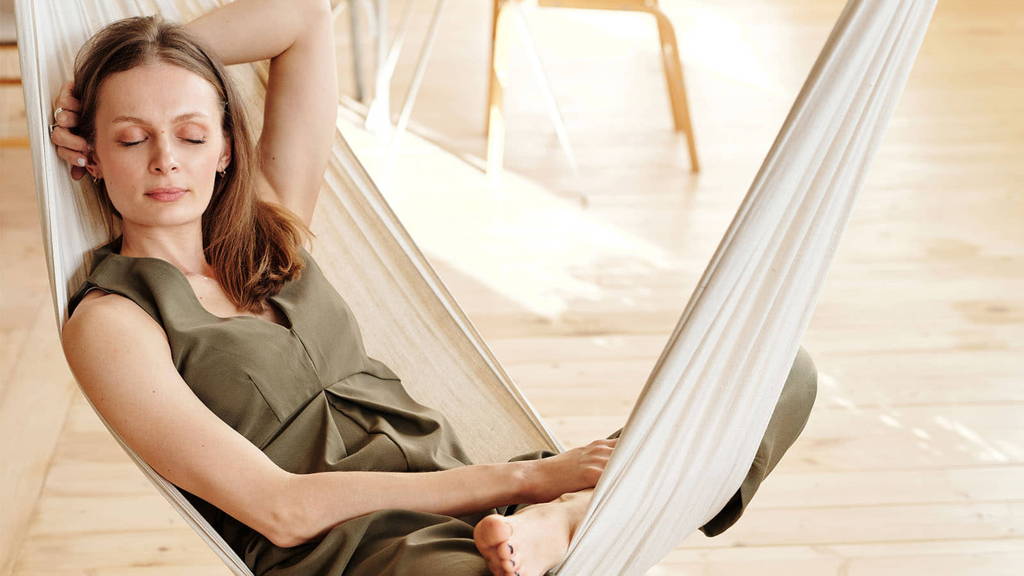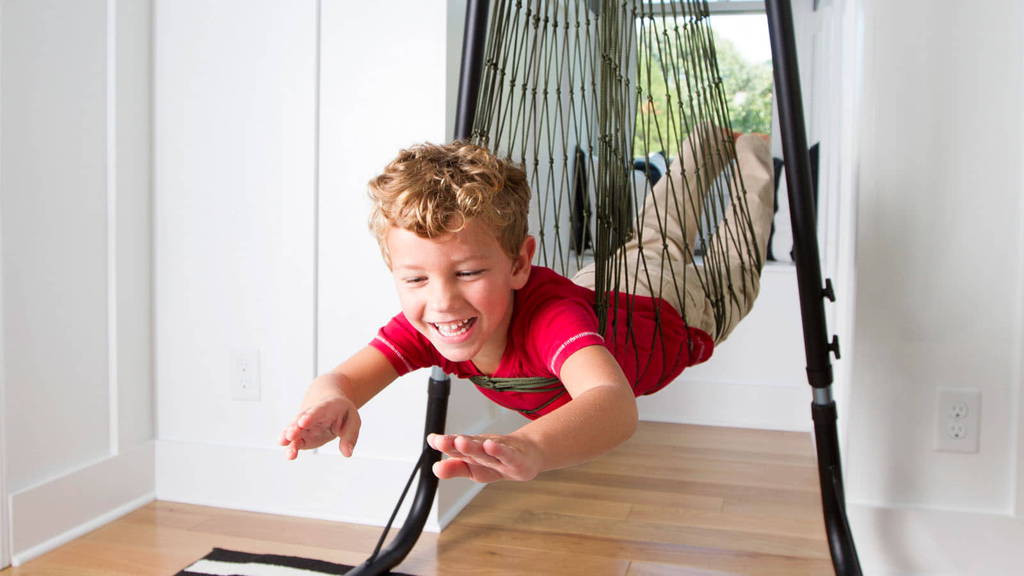4 Benefits of Hammocks in the Home
- You can hang hammocks indoors or outdoors
- A hammock can lend a cool vibe to just about any room
- Some people nap or sleep in hammocks for better sleep
- In some parts of the world, hammock sleeping is common
Hammock Benefits
Zero Pressure Point Sleep

Zero pressure point sleep means that instead of your body conforming to your bed, your bed conforms to your body. For example, pressure is usually applied to your shoulders, back, and butt with a mattress.
With a hammock, there are no particular contact points between your bed and your body. Instead, you are held and “hugged” by the hammock in a free-floating manner. In other words, equal pressure is applied across your entire body, and many people consider this a better way to sleep.
Deeper Sleep

Decreased Back Pain

- Support your neck with a high-quality pillow
- Wrap yourself in a big, comfy blanket
- Put a second pillow under your knees for extra back support
The Sway Advantage

4 Benefits of Sleeping in a Hammock: Conclusion
You can install a hammock just about anywhere–inside or out. Many enjoy hammocks in their study, den, living room, or playroom. Making your hammock childproof is a breeze and mainly involves padding underneath to cushion those inevitable tumbles.
 Skip to content
Skip to content

